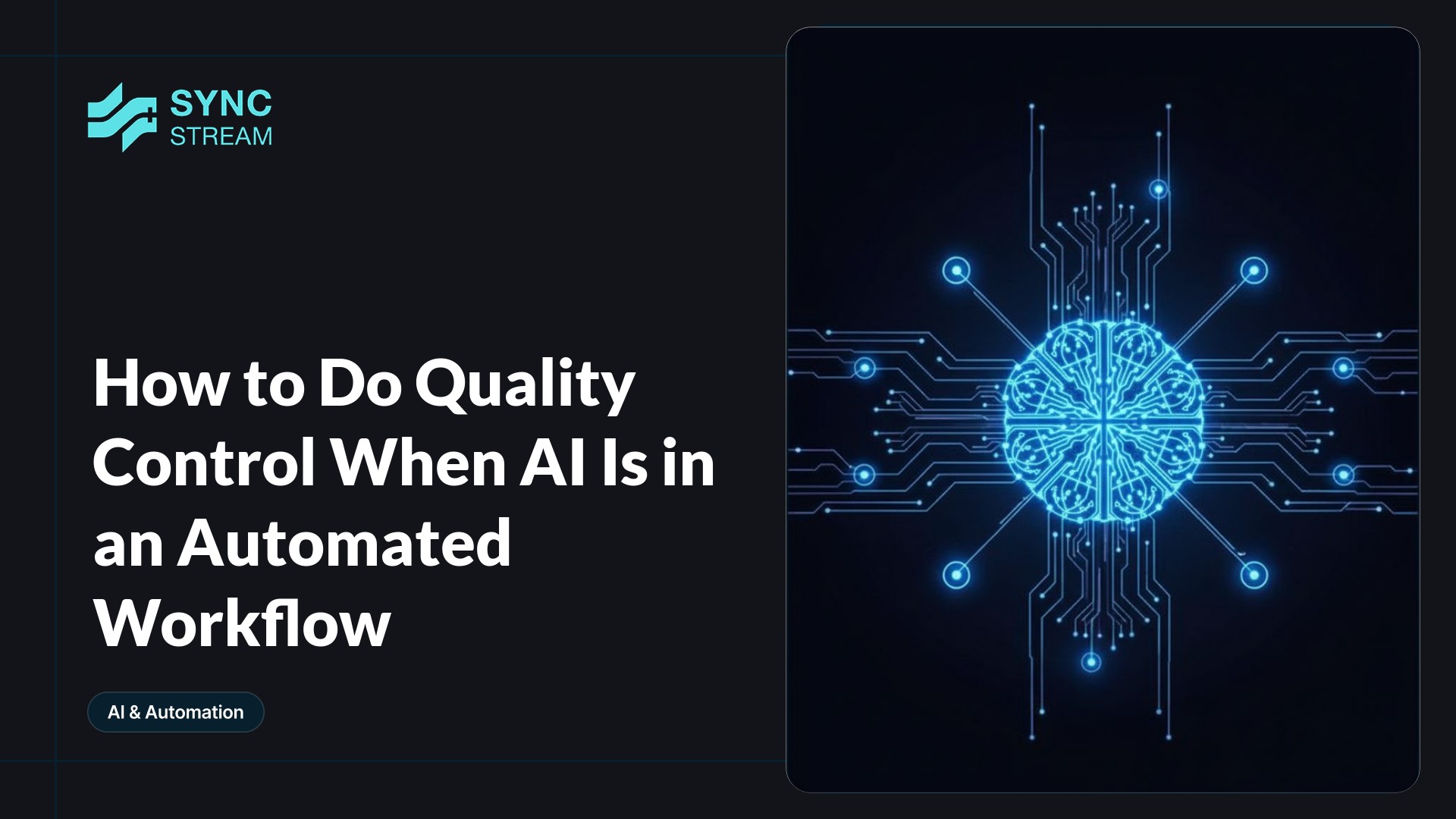
When integrating AI into your automated workflows, maintaining quality and reliability is crucial.
While AI can drive efficiency and innovation, its outputs aren’t always 100% perfect. At Sync Stream, we’ve developed a robust approach to ensure that AI-powered automation delivers consistent, high-quality results.
Here’s how you can achieve the same.
1. Validation Before Processing
Before passing data to an AI step, it’s essential to validate the inputs. This ensures the AI is working with clean, accurate data, reducing the likelihood of errors.
- Use a Function Node or Code Node to check (think of this as how you would proof read an email before sending):
- Data format, structure, or completeness.
- Text length, numerical ranges, or required fields.
- For example, if the input expects a customer’s name and email, validate that both fields are present and properly formatted before proceeding.
This simple step prevents garbage in, garbage out scenarios that can undermine your automation.
2. Post-Processing Checks
After the AI generates its output, perform a quality check to ensure the results meet your standards (not different to say quality assurance teams that operate in manufacturing).
- Use a Function Node to validate:
- Outputs for null or empty responses.
- Patterns or formats (e.g., does the output follow the required JSON structure?).
- Specific criteria such as keywords or numerical ranges.
- Flag ambiguous or low-confidence outputs for further review.
For instance, if your AI generates customer responses, check that the reply is relevant and contains key phrases that meet your business guidelines.
3. Error Handling with Thresholds
AI models often provide confidence scores or indicators of reliability (pro tip; you have to set this up).
Leverage these to handle errors intelligently:
- Implement thresholds to define acceptable confidence levels.
- Route low-confidence outputs to a manual review process or send an alert for human intervention.
By setting clear thresholds, you ensure questionable outputs are addressed before causing downstream issues.
4. Logging and Debugging
Effective quality control requires a way to trace issues back to their source. Logging is essential for monitoring and improving workflows.
- Use the Set Node or Function Node to log:
- Input data sent to the AI.
- AI-generated outputs.
- Store these logs in a database, file, or external service like Google Sheets or Notion for easy review.
These logs are invaluable for debugging and refining your workflows over time.
5. Human-in-the-Loop
Whilst AI today has incredibly high performance levels, as with us humans it isn’t perfect, and some tasks require a human touch.
For critical workflows, integrate manual reviews where necessary:
- Route questionable AI outputs to a queue (e.g., Slack, email, or task management tools like Asana).
- Enable manual overrides for key decision points in the workflow.
This hybrid approach ensures that sensitive or complex tasks get the attention they deserve, maintaining quality and trust.
6. Testing and Monitoring
To keep your workflows running smoothly, it’s essential to test and monitor them regularly.
- Test with edge cases and unexpected inputs to identify weaknesses.
- Use Trigger Nodes or external monitoring tools to track the AI’s performance over time.
By proactively testing, you can identify and address potential issues before they affect your business operations.
7. Retry Logic
Sometimes, errors are temporary and can be resolved with a retry. But we don’t have a human retry the workflow. You can build retry logic into your workflows to handle these cases:
- Use the Error Workflow or conditional nodes to:
- Retry failed AI steps after a delay.
- Fall back to default outputs or alternative logic paths if retries fail.
This ensures that your workflows remain robust, even when faced with occasional hiccups.
Ensuring Long-Term Success
By implementing these quality control measures, you can harness the power of AI without sacrificing reliability. At Sync Stream, we combine automated checks, human oversight, and continuous monitoring to deliver consistent, high-quality results for our clients.
